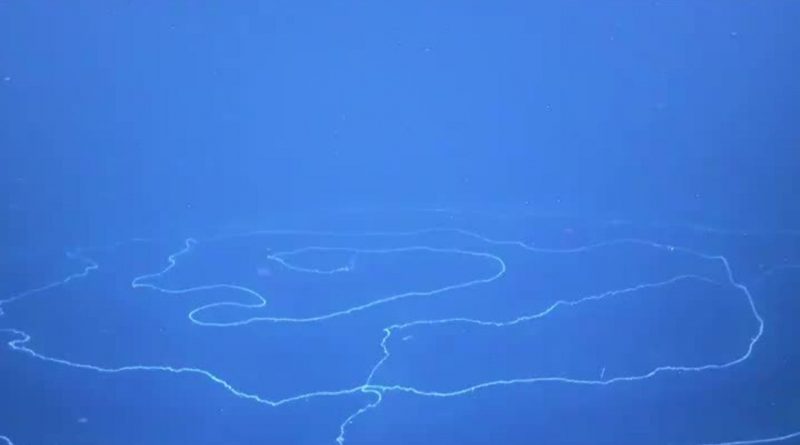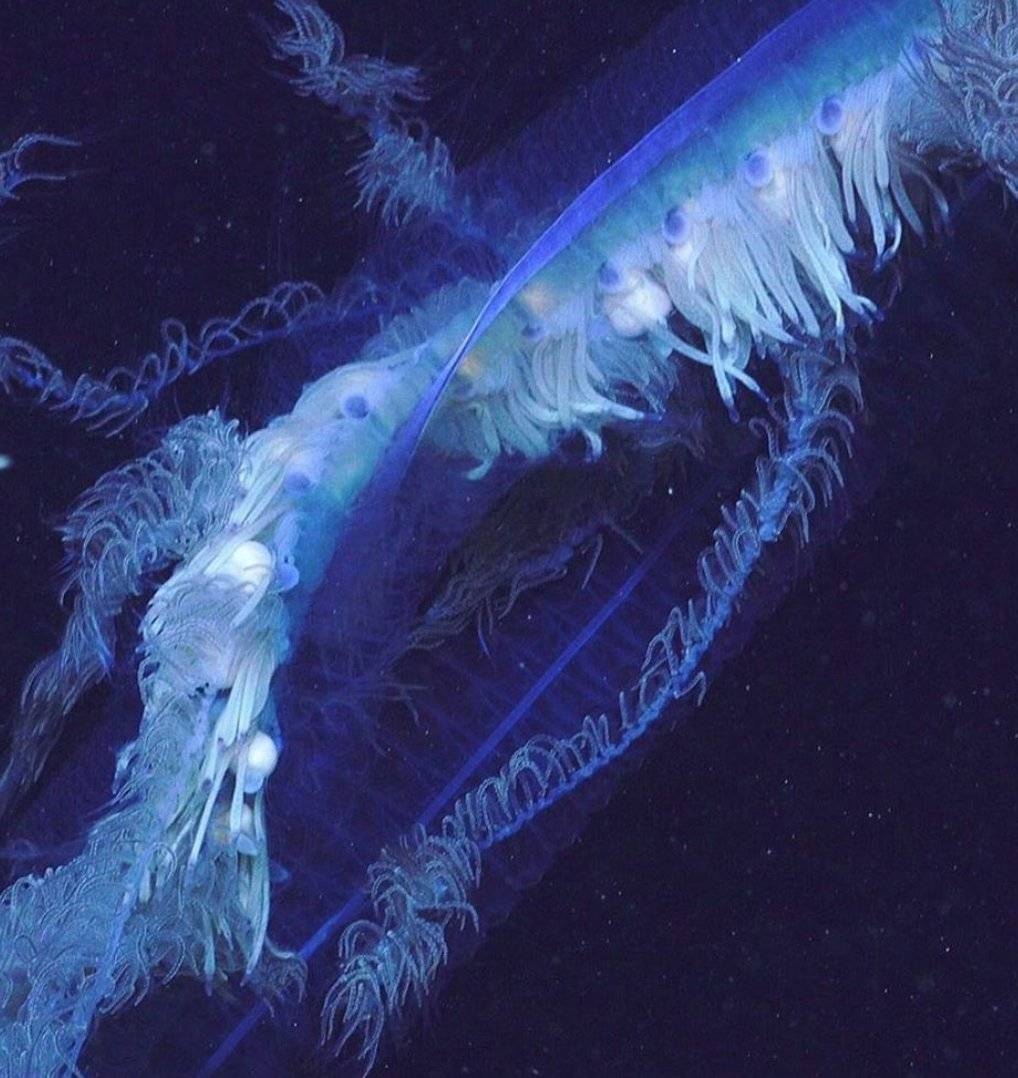
On March 16, 2020, researchers aboard the Schmidt Ocean Institute's ship Falkor stumbled upon a beautiful *giant* Apolemia, a type of siphonophore, in the Indian Ocean off western Australia. The scientists are not sure of the exact length of the silly string-like creature, which was found in the Ningaloo Canyons at a depth of 2,070 feet (631 meters). However, based on the measurement of its outer ring by a laser-equipped drone, they estimate it was 150 feet (46 meters) long.
"We think it's the longest animal recorded to date," Dr. Carlie Wiener, director of marine communications at the institute, told USA TODAY.

Siphonophores, which are related to jellyfish, are deep-sea predators that prey on tiny crustacean and fish using the vast array of stinging cells on their tentacles. Though they appear as a single organism, every specimen is a gelatinous colony made up of thousands of individuals, each fulfilling a specialized function. Some are responsible for catching prey, while others are charged with distributing the nutrients throughout the colony.
Dr. Rebecca Helm, an assistant professor at the University of North Carolina, who was not part of the expedition, believes the find is significant because siphonophores are fragile and hard to find. "I've gone on numerous expeditions and have never, EVER, seen anything like this," she wrote in a tweet. "THIS animal is massive. AND not just massive, the colony is exhibiting a stunning behavior: it's hunting." The researcher, who specializes in the evolution and development of jellyfish, speculates that because it takes a long time for life to grow in the near-freezing deep sea temperatures, this creature could be "tens, possibly HUNDREDS of years old."
This was not the only intriguing animal discovered by the Schmidt Ocean Institute researchers during their investigation of the rarely explored deep-sea areas in and around Australia. Their month-long expedition across Bremer Bay, Perth Canyon, and the Ningaloo Canyons, which involved 20 dives, has led to the discovery of about 30 new species! Here is a glimpse of the amazing underwater world the lucky scientists experienced.
Resources: USAtoday.com, schmidtocean.org, www.slashgear.com
